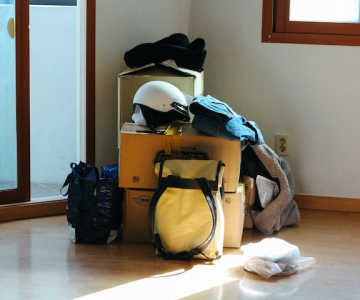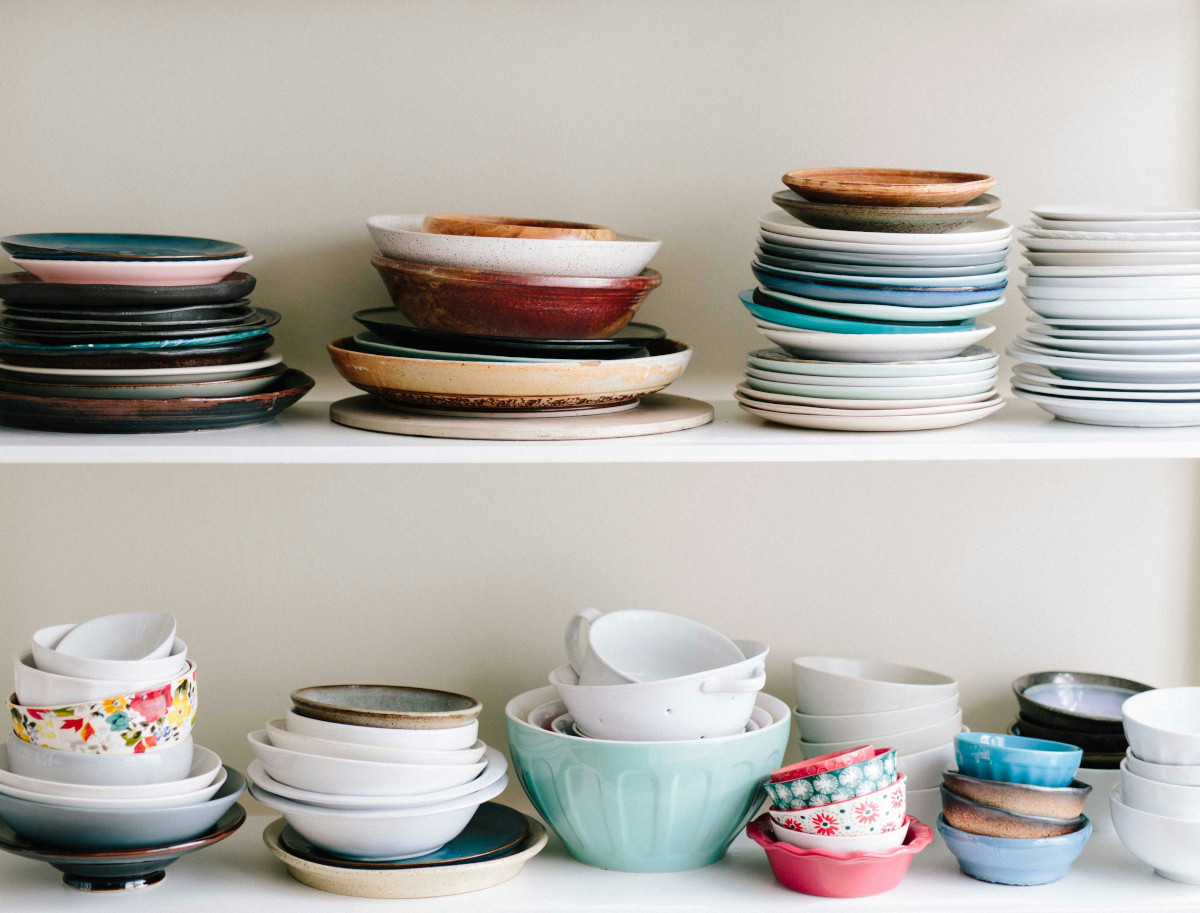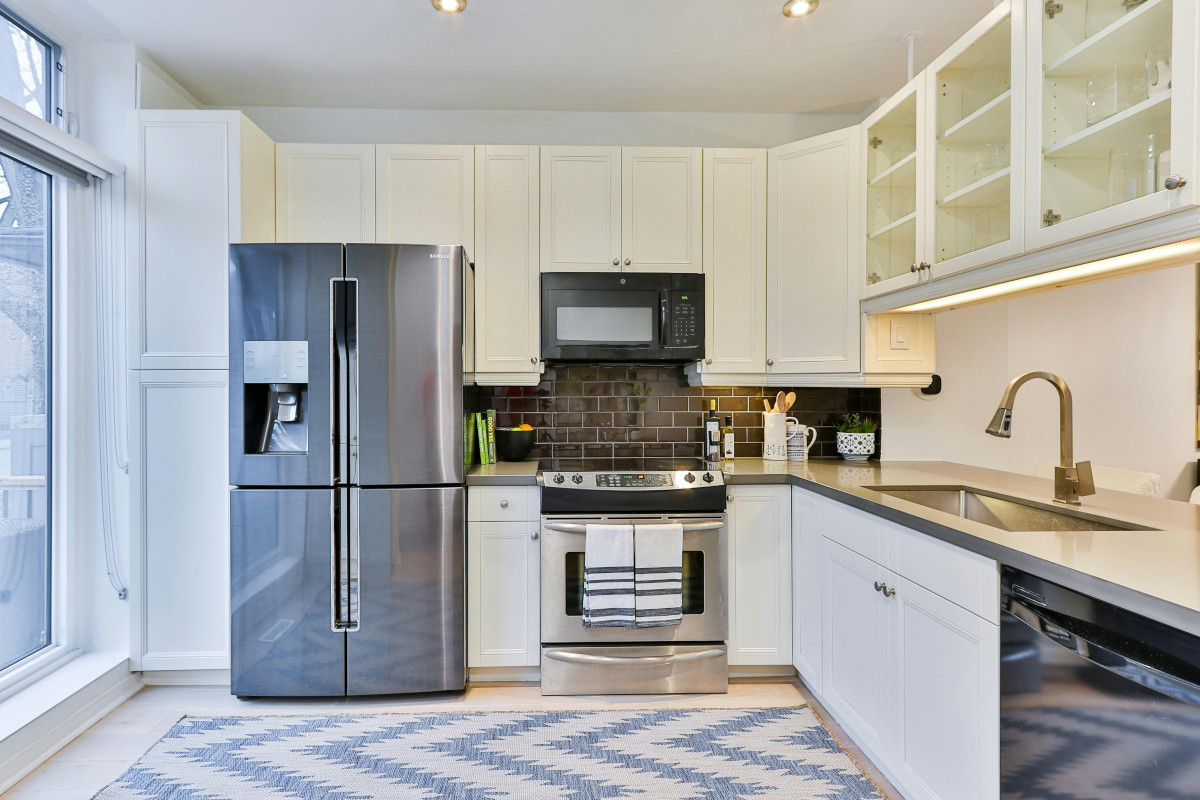How to Store Furniture in a Storage Unit

Deciding where to store your furniture, whether during a move or while clearing out an estate, often adds unnecessary stress to an already hectic situation. How do you ensure the safety of your belongings, especially when the storage duration is uncertain?
WheeKeep understands these challenges. Our detailed guide on how to store furniture in a storage unit aims to dispel your anxieties and leave you feeling confident in your next steps.
We provide not only insights into storing your furniture but also evidence of why our efficient and secure furniture storage unit service is the top choice in Saudi Arabia. Choosing WheeKeep for storage offers you both protection and peace of mind for your valued items!
Is it OK to Store Furniture in a Storage Unit?
First, should you store your furniture in a storage unit? Yes – in fact, this is the best approach most of the time. Whether it’s due to transitional living situations, lack of space, or preserving heirloom pieces, furniture storage units offer a viable solution.
However, while storage units provide a straightforward answer, it’s not without its challenges. The primary concern is the potential for damage. Factors like temperature changes, humidity, and the risk of pests can pose threats to furniture, especially those made of sensitive materials like wood or leather.
Climate-controlled units are ideal in mitigating these risks, maintaining a consistent environment that helps preserve the integrity of stored items. However, not all storage facilities offer this feature, and it can be more costly.
Another challenge is the duration of storage. Short-term storage poses fewer risks, but long-term storage can be more problematic. The longer furniture is stored, the greater the risk of exposure to adverse conditions.
The good news is that all of these challenges are alleviated by partnering with Saudi Arabia’s trusted choice for on-site storage units or portable storage units. You can rest assured your furniture is safe and secure with us. That being said, let’s talk about how to store furniture in a storage unit.
How to Store Furniture in a Storage Unit
Storing furniture in a storage unit requires meticulous planning and execution to ensure that your pieces remain in excellent condition. Here’s a comprehensive guide covering essential steps, starting with cleaning and protecting your furniture.
Cleaning and Protecting Furniture Pre-Storage
Begin by thoroughly cleaning each piece of furniture. Dust and debris can lead to scratches or damage over time. If you don’t bring these risks into the storage unit on the furniture, there is a much lower chance you’ll experience any sort of problems with furniture safety. Here’s some tips:
- For wooden pieces, use a gentle wood cleaner to remove any dirt and apply a layer of polish to protect the surface.
- Upholstered items should be vacuumed and, if possible, professionally cleaned to remove any stains or odors.
- Metal parts, such as handles or legs, can be wiped down with a damp cloth and dried immediately to prevent rust.
You’re not quite ready to start packing your furniture storage unit after cleaning, though. Protecting your furniture is crucial.
Use a furniture-specific protectant spray for upholstery to guard against dust and pests. A quality leather conditioner is essential for leather items to prevent drying and cracking.
Considering Disassembly for Larger Items
It may make sense to disassemble furniture depending on how much space you have in your storage unit. This also reduces the risk of damage during transport and storage. You can take apart items like bed frames, tables, and wardrobes.
It’s essential to keep track of all hardware – screws, bolts, and other small parts. Place these in a labeled bag, and tape it to the respective furniture piece or store them all together in a clearly marked container.
Take note or photograph each step when disassembling, which will help in reassembling the items later. Wrap each part individually for protection.
Choosing the Right Packing Materials
Selecting appropriate packing materials is vital to protect your furniture in storage. Bubble wrap, furniture pads, and sturdy packing boxes are essential.
Wrap glass components separately and mark them as fragile. For wooden and upholstered items, breathable covers are preferable to plastic, which can trap moisture and lead to mold and mildew.
Ensure all items are securely wrapped and padded. Pay extra attention to corners and edges, as these are prone to damage. If storing mattresses, use a mattress cover and store them flat to maintain their shape.
Optimizing Furniture Placement in the Storage Unit
The arrangement of furniture within your storage unit can significantly impact the preservation of your items. It’s time to play a bit of tetris!
Start by placing the largest and heaviest items, like sofas and wardrobes, on the bottom. Keep them off the floor using pallets or cloth covers for additional protection against moisture and pests.
Place heavier boxes on the floor and lighter ones on top. Ensure that there’s enough space between items to prevent scratching and to allow air to circulate. Avoid leaning furniture against the unit’s walls, as temperature fluctuations can cause damage over time.
Mirrors and framed artworks should be stored upright, not flat. Cover them with cloth or bubble wrap for protection and consider a separate, smaller storage unit for these if possible.
Maintaining Furniture Condition in Long-Term Storage
For long-term storage, maintaining your furniture’s condition is paramount. Changes in temperature and humidity over time can affect different materials. Here’s what you need to consider:
- Regular Monitoring: Schedule periodic visits to your storage unit to inspect the condition of your furniture. Look for any signs of wear, moisture, or pest infestation. This proactive approach can help you address any issues before they become significant problems.
- Climate Control: If your storage facility offers climate-controlled units, consider using them for long-term storage. These units maintain a consistent temperature and humidity level, which is crucial for preventing wood warping, mold growth, and upholstery deterioration.
- Furniture Covers: Invest in quality furniture covers that allow for ventilation. These covers protect against dust and dirt while allowing air to circulate, preventing moisture buildup.
- Positioning: Avoid stacking furniture on top of each other. Heavy items can warp or damage those underneath over time. If stacking is unavoidable, use protective padding between items.
- Leather Care: For leather furniture, it’s crucial to maintain its condition. Treat leather items with a quality conditioner every few months to keep the material from drying out or cracking.
Addressing Specific Furniture Types
While we’ve covered the basics of how to store furniture in a storage unit, we want to offer some more specific tips for specific types of furniture:s
- Wooden Furniture: Wood is prone to swelling and contracting with temperature changes, leading to warping or cracking. Keep wooden furniture away from the unit’s doors and walls to protect it from external temperature changes.
- Upholstered Furniture: Fabric can attract pests and retain moisture, leading to mold and mildew. Use breathable covers and consider placing silica gel packets in drawers or underneath cushions to absorb excess moisture.
- Metal Furniture: Prevent rust and corrosion on metal furniture by ensuring it’s completely dry before storage. Consider applying a coat of protective wax or oil.
- Glass Components: Glass should be wrapped in packing paper and then bubble wrap. Store it standing up, not flat, and ensure it’s clearly labeled as fragile.
We have more tips on how to organize your storage unit and what can you store in a storage unit in our blog. But for now, let’s look at some of the most important considerations in choosing your furniture storage unit from a safety and security standpoint.
The Importance of Finding the Right Furniture Storage Unit
Selecting the right furniture storage unit is a critical decision that affects not just the safety of your items but also your peace of mind. Understanding what you need and what to look for in a storage unit can make a significant difference.
Assessing Your Storage Needs
First things first – what size storage unit do I need? Here are some factors to consider to help you get ample storage space along with peace of mind knowing you’re choosing the right solution for your specific furniture:
- Quantity and Size of Furniture: Take an inventory of the furniture you plan to store. Measure the dimensions of larger items to ensure they’ll fit comfortably in the storage unit without the need for excessive disassembly.
- Duration of Storage: Determine how long you need to store your furniture. Short-term and long-term storage may have different requirements, especially in terms of cost and the level of protection needed.
- Value and Sensitivity of Items: Consider the monetary and sentimental value of your furniture, as well as its susceptibility to environmental factors like humidity, temperature fluctuations, and pests. Delicate items might require climate-controlled storage.
- Access Frequency: Think about how often you’ll need to access the stored furniture. Regular access requires a conveniently located unit and possibly an arrangement that allows easy retrieval of items.
When in doubt, use our storage space calculator or reach out for a personalized recommendation. We’re your trusted source for all things storage, and we can discuss your needs and help you choose accordingly.
What to Look for in a Storage Unit
Once you have a clear understanding of your needs, you can start to compare and contrast your options to see what aligns with those needs. No matter what your needs are, here are some of the most important factors to consider when choosing a storage unit:
- Climate Control: If you’re storing wooden furniture, antiques, or any items sensitive to temperature and humidity, choose a unit with climate control. This feature maintains a stable environment, protecting your furniture from warping, mold, or mildew.
- Security Measures: Ensure the facility has robust security measures in place. This includes surveillance cameras, secure locks, gated access, and, ideally, on-site staff. The higher the security, the safer your furniture will be.
- Accessibility: Consider how easily you can access the unit. Facilities with extended hours or 24/7 access can be more convenient, especially if you anticipate frequent visits.
- Maintenance and Cleanliness: Visit potential storage facilities to assess their cleanliness and maintenance standards. A well-maintained unit is less likely to have issues with pests and dampness, which can damage your furniture.
- Insurance and Liability: Inquire about the facility’s insurance policies and your own responsibilities. Understanding the coverage for your stored items can provide additional peace of mind.
- Reviews and Reputation: Finally, check customer reviews and seek recommendations. A storage facility with a good reputation is more likely to provide reliable and quality services.
Finding the right storage unit for your furniture involves a careful assessment of your specific needs and a thorough evaluation of the available options. You’ll also want to consider portable storage unit cost, though you shouldn’t shop based on price alone – you typically get what you pay for!
But whether you’re looking for moving storage units or you just need to clear out an estate, you can count on WheeKeep!
Enjoy Peace of Mind and Convenience With a WheeKeep Furniture Storage Unit!
WheeKeep offers an unrivaled combination of convenience and security for your furniture storage needs. Our commitment to providing top-notch storage solutions is reflected in every aspect of our service.
Our range of unit sizes caters to various storage needs. Whether you’re storing a few chairs or an entire living room set, we have the space to accommodate your items comfortably.
We understand the importance of protecting your valuable furniture from environmental elements. Our climate-controlled units maintain a stable temperature and humidity level, ensuring your items are safe from warping, mold, and other damages.
With 24/7 CCTV surveillance, secure locks, and gated access, WheeKeep prioritizes the security of your belongings. Our state-of-the-art security measures provide you with the assurance that your furniture is safe. You also enjoy effortless access to your items when you need them.
At WheeKeep, we pride ourselves on our customer service. Our knowledgeable team is always ready to assist you in choosing the perfect unit and to answer any queries you may have. So, why not get started today now that you know how to store furniture in a storage unit?
Beginning your WheeKeep journey is simple. Simply fill out our booking form and we’ll get the process underway. Our team will guide you through the selection process, ensuring you find the storage solution that’s just right for you.
Choose WheeKeep for a worry-free furniture storage unit experience that combines the best of security, convenience, and customer care!
Final Thoughts on How to Store Furniture in a Storage Unit
The key takeaways from our guide on how to store furniture in a storage unit are clear: proper preparation, choosing the right unit, and ongoing maintenance are crucial.
Remember to clean and protect your furniture before storage, disassemble larger items for space efficiency, use suitable packing materials, strategically place your items in the unit, and regularly check on them, especially for long-term storage. You ensure the longevity and safety of your cherished items by following these guidelines.
For a seamless and secure furniture storage unit experience, start with WheeKeep today – where your furniture’s care is our top priority!
Related Blogs

How to Store Plates in Storage
Storing dishes can be stressful - especially if you have sentimental or expensive plates, glasses,...
Read more
How to Prevent Mold in a Storage Unit
There are plenty of things to worry about when locking your goods away out of...
Read more
How to Store Appliances in Storage
Every day, we show customers how to store appliances in storage. But many find choosing...
Read more
